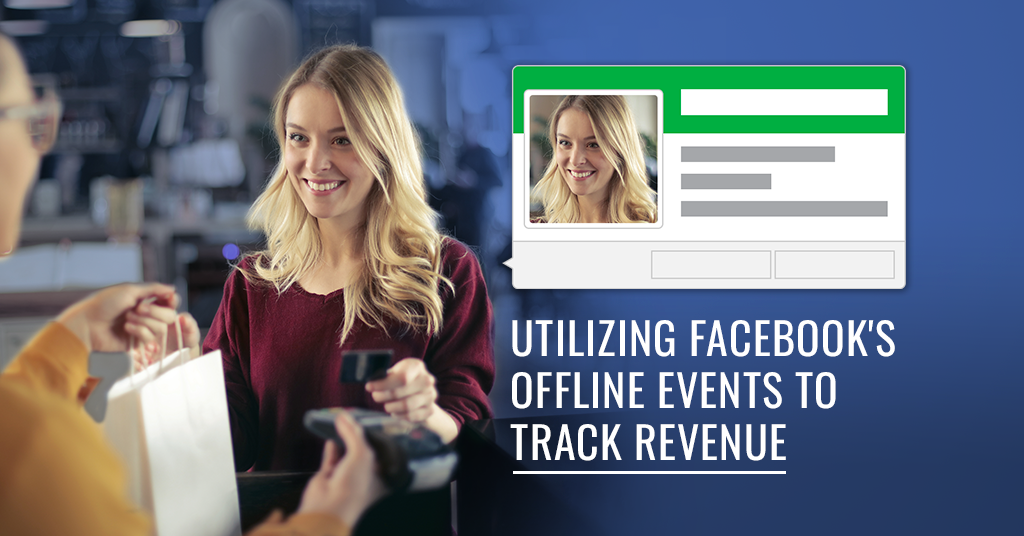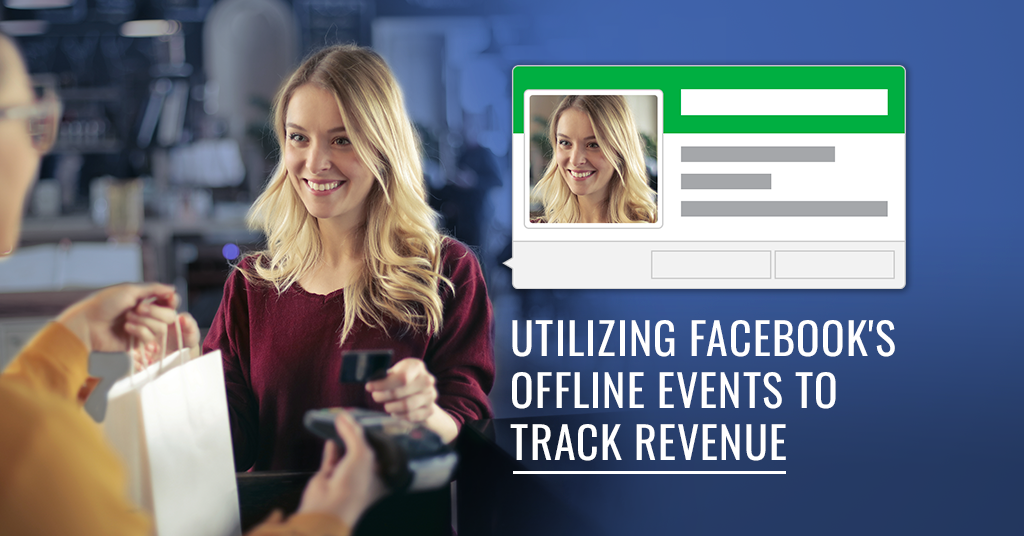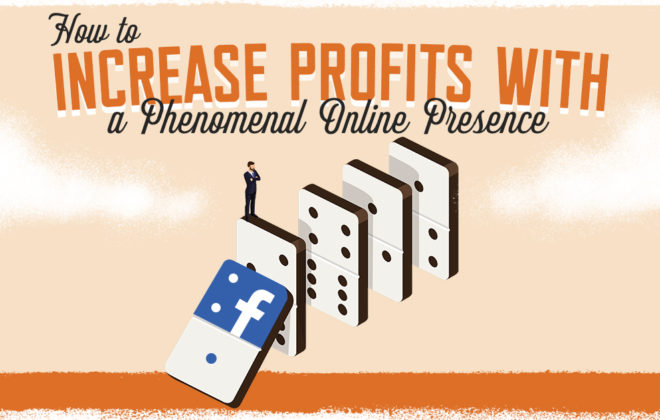
Utilizing Facebook’s Offline Events to Track Revenue
 Facebook’s marketing platform has come a long way in the last several years, from tracking ‘likes’ and engagements for businesses in the early days—to today, tracking actual revenue attributed to your ads. That said, many marketers are failing to put the right tools in place to track revenue, OR their strategy isn’t conducive to being tracked.
Facebook’s marketing platform has come a long way in the last several years, from tracking ‘likes’ and engagements for businesses in the early days—to today, tracking actual revenue attributed to your ads. That said, many marketers are failing to put the right tools in place to track revenue, OR their strategy isn’t conducive to being tracked.
While social media is a very effective way of gaining awareness, it is also a very powerful revenue-generating platform. Essentially if you have a CRM or some sort of customer management software & proper tracking in place, you can find a way to track revenue back to social. Some common tools include: Utilizing the Facebook pixel event-values for online sales; utilizing tracking codes to integrate with Google Analytics, CRMS, etc; and more recently, Facebook’s Offline Events. Since most folks are pretty familiar with the Facebook pixel & URL parameters, we’ll focus on the last piece, Offline Events.
What is it? Offline events allow you to upload your customers & match them back to your ads, regardless of where they bought. This is perfect for businesses that have a presence both online & offline, longer buying cycles, or other tracking issues.
How it works:
- Customer Data: You’ll need a .csv or .txt file of your customers— Facebook recommends uploading these as frequent as possible for better optimizations (or you can integrate through the API). But you simply need your customer info (name, phone number, email, zip, etc.), Facebook uses these identifiers to match back to their users. There are a few formatting caveats to make sure you get the highest possible match rate. For example, emails need to be in all lower-case, phone numbers must contain a country code, countries must be formatted as an ISO two-letter country code, etc. (more formatting best-practices here).
- Event Data: So you’ve provided the customer info so that Facebook can match your customers back to Facebook users, so now we need to track attribution with your ads. We need to determine your event type, it’s associated value, & when it occurred.
Event Type: Offline Event types are structured the same way as standard events for the Facebook pixel, so you have Purchase, Lead, CompleteRegistration, etc. as well as custom conversions. Custom conversions are useful if you’re trying to track a certain product sale for further insights, in addition to just value.
Event Value: Speaking of value, that’s tracked in the event details, too. Your value must be a decimal number greater than 0, and cannot include currency symbols or commas (you choose your currency separately). If you’re uploading a purchase event, you must include a value. For all the other events, values are optional.
Event Time: You must also include an event time. It’s important that this is accurate to effectively show attribution to your ads. Facebook recommends utilizing a time stamp in addition to just the date, but it’s not mandatory.
Once you’ve mapped & uploaded your data, Facebook securely hashes and begins the match-back process & usually takes a minimum of 15 minutes. A couple of things to keep in mind:
- You can’t go back and look at offline data after you’ve uploaded it within Facebook, nor can you delete it. So make sure everything is accurate prior to uploading, or else you won’t be able to correct it after the fact.
- If you do make a mistake uploading the data, don’t upload it again. At least not as the same event. Instead, upload the data as a separate event (issues ensue if the same data is uploaded as the same event with Facebook’s deduping process).
Have you tried Facebook’s offline events? What was the result? Let us know if you have questions pertaining to tracking revenue from Facebook ads!
Paul Rakovich
Browse All PostsTell Us Your Goals
Recent Posts
- Google PMax: Get the Most Out of Your Ad Campaigns While Combating Fraud
- Lead Ads Don’t Have to Suck: How to Leverage Them Correctly
- Why More Expensive PPC Ads are Almost Always Worth It
- Unlock the Secrets of Organic CPA: The Ultimate Guide to Cost Per Acquisition
- Secrets We’ve Learned from Years Working with Paid Account Reps at Meta, TikTok, LinkedIn and Google


